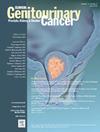在资源有限的非洲地区,总前列腺特异性抗原诊断前列腺癌的敏感性和特异性:肯尼亚一家医院的5年回顾
IF 2.7
3区 医学
Q3 ONCOLOGY
引用次数: 0
摘要
前列腺癌(CaP)是男性最常见的癌症。随着预期寿命的增加,CaP的发病率也在增加。从使用前列腺总特异性抗原(tPSA)到使用其他PSA参数进行筛查有一种漂移。然而,这些参数在资源有限的环境中并不容易获得。目的评价tPSA对非洲人群CaP诊断的敏感性和特异性。这是一项2018年1月至2022年12月在AIC Kijabe医院进行的为期5年的回顾性研究。我们纳入了所有接受前列腺活检的前列腺疾病患者的记录,排除了使用5- α还原酶抑制剂或α受体阻滞剂和尿路感染患者的记录。我们使用4、10、20和100 ng/ml的tPSA截止值来计算灵敏度和特异性。结果共纳入710例病例,其中组织病理学诊断为CaP的病例327例(46.1%)。平均tPSA为69.70±2.9 ng/mL。诊断CaP的血清tPSA敏感性和NPV分别从tPSA≥4时的99.4%和96.6%下降到tPSA≥100时的59.3%和72.7%。特异性和PPV分别从tPSA≥4时的14.9%和49.9%上升到tPSA≥100时的92.4%和87.0%。结论在资源有限的情况下,tPSA仍然是CaP的良好筛查工具,PSA临界值≥10 ng/mL具有成本效益。PSA≥100 ng/ml几乎总是CaP,除非另有证明。本文章由计算机程序翻译,如有差异,请以英文原文为准。
The Sensitivity and Specificity of Total Prostate Specific Antigen in the Diagnosis of Prostate Cancer in a Resource-Limited African Setting: A 5-Year Review in a Kenyan Hospital
Introduction
Prostate cancer (CaP) is the most common cancer in males. With rising life expectancy, CaP incidence is increasing. There is a drift from the use of total prostate specific antigen (tPSA) to other PSA parameters for screening. However, theseparameters are not readily available in resource-limited settings.
Objective
To evaluate the sensitivity and specificity of tPSA to make the diagnosis of CaP in an African population.
Methodology
This was a 5-year retrospective review at the AIC Kijabe hospital between January 2018 to December 2022. We included all records of patients treated for prostate disease who had a prostate biopsy and excluded records of patients who had been on a 5-alpha reductase inhibitor or alphablocker and those with urinary tract infection. We used tPSA cut-offs of 4, 10, 20 and 100 ng/ml to calculate sensitivity and specificity.
Results
We included 710 records, of which CaP was the histopathological diagnosis in 327 (46.1%). The mean tPSA was 69.70 ± 2.9 ng/mL. Serum tPSA sensitivity and NPV to diagnose CaP dropped from 99.4% and 96.6% respectively at tPSA ≥ 4 to 59.3% and 72.7% respectively at a tPSA ≥ 100. The specificity and PPV rose from 14.9% and 49.9% respectively at tPSA ≥ 4 to 92.4% and 87.0% at tPSA ≥ 100.
Conclusion
In resource-limited settings, tPSA is still a good screening tool for CaP, with cost-effective PSA cut-off ≥ 10 ng/mL for further investigations. PSA ≥ 100 ng/ml is almost always CaP until proven otherwise.
求助全文
通过发布文献求助,成功后即可免费获取论文全文。
去求助
来源期刊

Clinical genitourinary cancer
医学-泌尿学与肾脏学
CiteScore
5.20
自引率
6.20%
发文量
201
审稿时长
54 days
期刊介绍:
Clinical Genitourinary Cancer is a peer-reviewed journal that publishes original articles describing various aspects of clinical and translational research in genitourinary cancers. Clinical Genitourinary Cancer is devoted to articles on detection, diagnosis, prevention, and treatment of genitourinary cancers. The main emphasis is on recent scientific developments in all areas related to genitourinary malignancies. Specific areas of interest include clinical research and mechanistic approaches; drug sensitivity and resistance; gene and antisense therapy; pathology, markers, and prognostic indicators; chemoprevention strategies; multimodality therapy; and integration of various approaches.
 求助内容:
求助内容: 应助结果提醒方式:
应助结果提醒方式:


